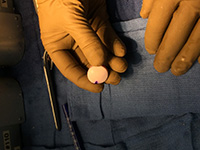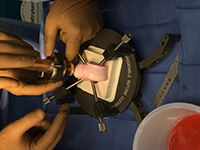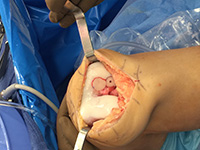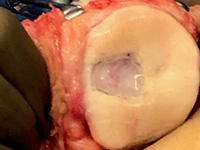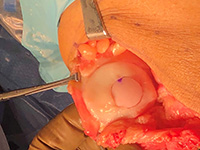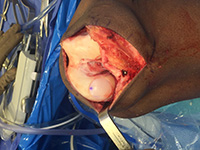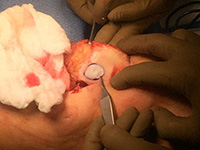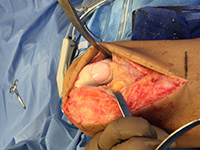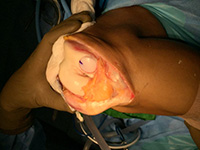Abrasion Arthroplasty
What is Articular Cartilage?
Articular cartilage is a connective tissue that lines bone ends to enable smooth movement in a joint. It can get injured by trauma or through the natural wear and tear process of the body. However, articular cartilage lacks the ability to repair itself due to a lack of blood supply.
What is Abrasion Arthroplasty?
Abrasion arthroplasty is a minimally invasive multiple tissue debridement (removal) procedure performed to stimulate the growth of new healthy cartilage. Drilling the subchondral bone (bone underlying the cartilage) initiates the bleeding and healing response. A blood clot is formed over the debrided region which gets converted into fibrous tissue, replacing the worn-out articular cartilage.
Indications for Abrasion Arthroplasty
Abrasion arthroplasty is performed to relieve knee pain and is an alternative intervention to total knee replacement. Your surgeon may recommend abrasion arthroplasty in the following cases:
- If you have developed severe degenerative arthritis in the articular cartilage
- Exposed sclerotic lesion
- Loss of joint space
- Not responded to conventional therapies
- In older patients
This surgery is not suitable if you have:
- Femorotibial malalignment
- Ligament instability
- High movement demands
- Morbid obesity
- Unwilling to comply with non-weight bearing for 2 months following surgery
Pre-surgical Care for Abrasion Arthroplasty
Before surgery, your physician will perform a physical examination and review your medical history. You will also be instructed regarding any medication or dietary restrictions to be followed.
Abrasion Arthroplasty Procedure
Abrasion arthroplasty surgery can be performed in a minimally invasive manner through small incisions with the use of an arthroscope, a tubular device with a camera on the end that is inserted into the joint for your surgeon to view the treatment area. The procedure is usually performed under local or general anesthesia.
- Your surgeon will apply a tourniquet on the area to be operated.
- Small incisions are made to insert the arthroscope and other surgical instruments.
- High-speed motorized burrs are used to drill through the degenerated cartilage to reach the subchondral bone, which is vascularized (has blood supply).
- Other procedures are also performed to address the injuries associated with the degenerated cartilage. These may include removal of the meniscus (meniscectomy), or synovial tissue surrounding a joint (synovectomy). In addition, any unwanted and unidentified loose bodies will also be removed.
- After abrasion arthroplasty, your surgeon will wash the operated area with saline to prevent infection and close the incision.
- A heavy compression bandage is applied to prevent blood loss.
Recovery from arthroscopy is quicker than open surgery. Your surgeon will suggest the best procedure depending on your condition.
Post-surgical Care for Abrasion Arthroplasty
The post-surgical care following abrasion arthroplasty may include:
- Avoid applying excess weight or pressure on your knee such as when climbing stairs, walking on steep slopes or squatting.
- Walking is encouraged. Depending on the pace of recovery, the intensity of regular activities may be increased gradually.
- You should rest for a few weeks to months depending on your health condition.
- If your joint is severely damaged, it could take up to 9-12 weeks to resume your daily activities.
- If you have been operated on a weight-bearing part of the joint, you will need to use crutches for 6 – 8 weeks to prevent the blood clot from dislodging.
Risk and Complications of Abrasion Arthroplasty
As with any surgical procedure, abrasion arthroplasty may be associated with some risks and complications such as:
- Post-operative infection
- Possibility of subchondral bone or joint dislocation
- Pain and swelling in the knee
- Locking of the joint or knee trauma
- Heavy bleeding and formation of blood clots
- Allergic reactions or side effects of the anesthesia




